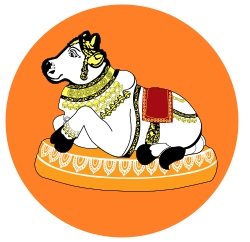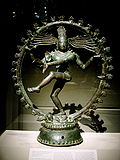This article has multiple issues. Please help improve it or discuss these issues on the talk page . (Learn how and when to remove these messages)
|
| Part of a series on |
| Shaivism |
|---|
 |
Shiva is one of the principal deities in Hinduism and is considered part of the Trimurti alongside Brahma and Vishnu. Numerous temples dedicated to Shiva exist across India and beyond, often featuring lingams as representations of the deity. [1] Hindu scriptures describe the worship of Shiva and the establishment of temples and shrines across the Indian subcontinent. Among these, the Jyotirlinga temples are considered particularly significant. [2]
Contents
- The 12 Jyotirlinga temples
- Pancha Bhuta Sthalams (Five Elemental Manifestations)
- Pancharama temples
- Pancha Sabhai
- Ashta Veeratta Temples
- Shani Parihara Temples
- Kashiswar Jiu temple
- Notable temples
- Andhra Pradesh
- Assam
- Bihar
- Chhattisgarh
- Goa
- Gujarat
- Jammu and Kashmir
- Karnataka
- Kerala
- Madhya Pradesh
- Maharashtra
- Odisha
- Punjab
- Rajasthan
- Sikkim
- Tamil Nadu
- Telangana
- Uttarakhand
- Uttar Pradesh
- West Bengal
- See also
- References
- External links


















